NFTs in Marketing: Creative Opportunities and Challenges

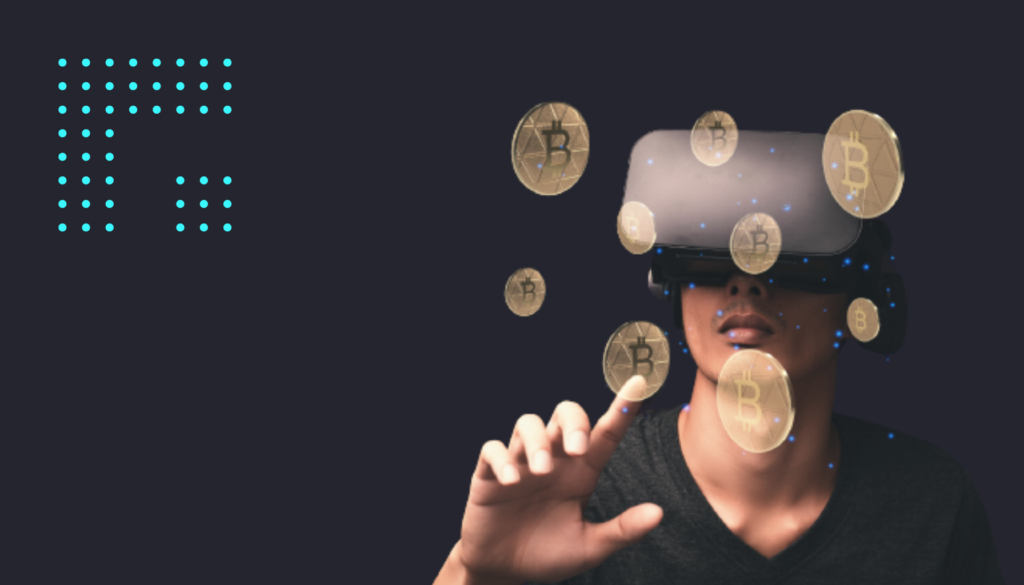
The groundbreaking technology of Non-Fungible Tokens, or NFTs has taken center stage in the ever-evolving digital world. Initially synonymous with the world of art, NFTs have now transcended traditional boundaries to infiltrate various industries, including marketing. These unique digital assets, built on blockchain technology, have captured the attention of both creators and collectors alike.
As NFTs continue to gain traction, their potential applications have expanded far beyond the realm of artistry. Marketing professionals have seized this technological marvel to create immersive and engaging campaigns that captivate audiences in entirely new ways. From limited edition releases that tap into the psychology of scarcity to the creation of virtual collectibles that blur the lines between physical and digital ownership, NFTs offer a realm of creative possibilities waiting to be explored.
We’ll navigate the uncharted waters of NFTs in marketing, shedding light on the remarkable prospects they present and the complexities they entail.
Opportunity 1: Limited Edition Campaigns
In the world of marketing, exclusivity has always held a special appeal. It taps into the human desire for rarity, for possessing something that only a select few can claim. NFTs have provided a digital canvas for brands to create this allure. Limited edition campaigns, powered by NFTs, take advantage of the unique properties of blockchain technology to offer an array of creative possibilities.
Creating Exclusivity with NFTs:
Let’s envision a situation where a cutting-edge software company is about to launch its latest innovative solution. Instead of following conventional product launch strategies, the company decides to tokenize a select number of NFTs that symbolize access to their groundbreaking software. Every NFT represents a unique software license, essentially establishing digital proof of authenticity. By leveraging blockchain, the company guarantees limited availability and origin verification, thereby amplifying the software’s appeal.
The Psychology of Scarcity and Demand:
Scarcity triggers an intricate and dynamic response within the human psyche. When something becomes scarce, its perceived value increases dramatically. The fear of missing out (FOMO) drives individuals to seek out and acquire these rare gems before they vanish into the hands of others. NFTs amplify this effect by providing evidence of ownership and scarcity, intensifying the emotional connection between the consumer and the product.
Driving Demand with Limited Edition NFTs:
The concept of owning a digital token that holds real-world value taps into a unique aspect of human psychology. Brands can orchestrate limited edition NFT drops that coincide with product releases, generating a buzz that transcends traditional marketing techniques. Collectors and enthusiasts alike will scramble to secure their digital ownership, increasing demand for the associated physical or digital product.
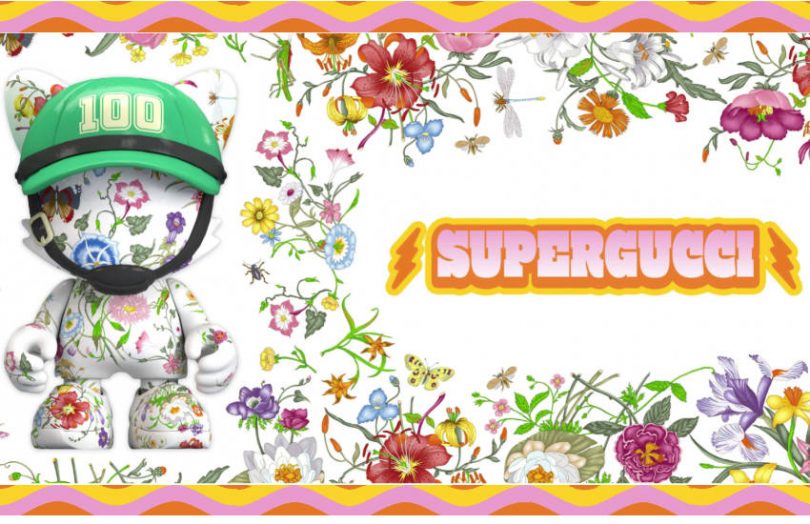
Real-world Examples:
Several brands have paved the way in the realm of limited-edition NFT campaigns. In a previous collaboration, synthetic celebrities Janky and Guggimon, renowned characters of Superplastic, joined forces with the sophisticated Italian brand Gucci for a project named SuperGucci. This initiative compiled 250 unique NFTs, blending classic Gucci motifs with SuperPlastic’s imaginative and mischievous aesthetics, aligning with Gucci’s tradition of embracing diverse technologies. Devotees of both Gucci and Superplastic were presented with three distinct opportunities to acquire NFTs.
In the music industry, Kings of Leon became the first band to release an album as an NFT. Each token represented a deluxe version of the album and granted access to unique concert perks. This groundbreaking move not only provided fans with an exclusive ownership experience but also established a precedent for NFTs in the music world.
More Sales From Your Website With AI
Personalized interactions based on your users' behaviour to get +50% more conversions.

Opportunity 2: Virtual Goods and Collectibles
Innovation often springs from the convergence of technology and consumer desire. NFTs have introduced a remarkable avenue for this convergence through the creation of virtual goods, digital collectibles, and in-game items that redefine ownership in the digital age.
NFTs as Digital Collectibles:
Think of NFTs as the 21st-century answer to traditional collectibles. Just as people have cherished baseball cards, stamps, and rare coins, the digital world now offers a playground for collecting unique digital assets. These NFT collectibles can range from digital art and animations to virtual pets and avatars.
The Allure of Owning the Unique:
The idea of owning something one-of-a-kind is deeply ingrained in human psychology. NFTs provide a tangible representation of this concept in the digital realm. The appeal lies not only in the inherent value of owning a unique piece but also in the ability to showcase this ownership on a global stage.
Monetizing Digital Assets:
NFTs have democratized the monetization of digital creations. Artists, creators, and even brands can tokenize their digital creations, turning them into tradeable assets with real-world value. This opens doors for content creators to earn from their digital art, and for brands to offer limited-edition virtual items that collectors are eager to purchase.
Successful NFTs as Virtual Goods Campaigns
- NBA Top Shot: The National Basketball Association (NBA) tapped into the NFT world with NBA Top Shot. This platform allows fans to purchase and trade officially licensed NBA collectible highlights. Each highlight is represented as an NFT, making the act of owning a memorable basketball moment a digital reality.
- Decentraland: Decentraland is a virtual reality platform that runs on blockchain technology. Users can purchase and own virtual land parcels as NFTs. They can then build, develop, and monetize their virtual spaces, creating a thriving ecosystem where NFT ownership translates into immersive experiences and even revenue.
- CryptoKitties: One of the earliest NFT success stories, CryptoKitties lets users collect, breed, and trade digital cats. Each CryptoKitty is a unique NFT, and the platform’s popularity led to a surge in interest in blockchain-based gaming and collectibles.
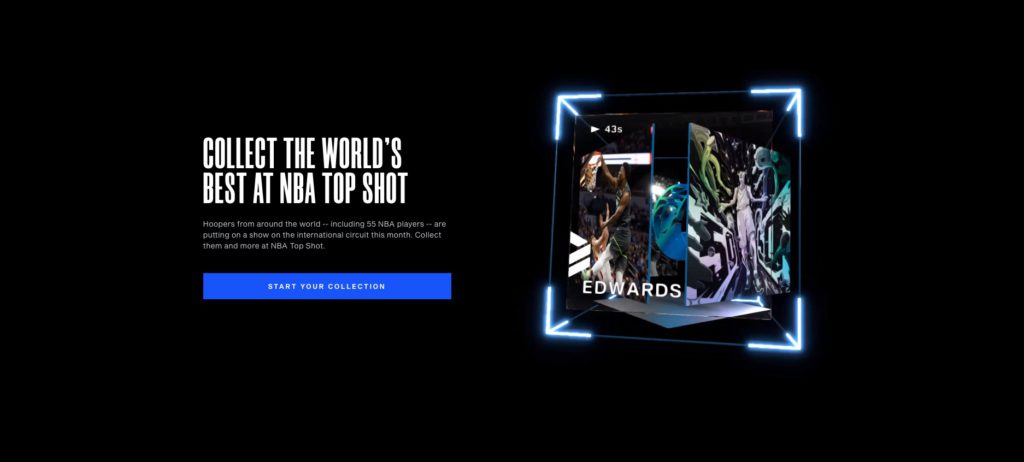
Opportunity 3: Enhancing Fan Engagement
Forging meaningful connections between brands and their audiences has become an art form. NFTs hold the potential to revolutionize fan engagement by creating immersive and interactive experiences that resonate on a personal level.
NFTs as Tools for Deeper Connections:
NFTs transcend the limitations of traditional engagement methods by providing a tangible link between fans and their favorite brands. Ownership of an NFT translates into a sense of belonging and exclusivity, fostering a deeper emotional connection. Fans aren’t just passive observers; they become stakeholders in the brand’s journey.
Gamification and Interactive Experiences:
Picture a situation tailored to the SaaS and technology space, where a software company initiates an NFT campaign that offers clients immersive access to virtual “behind-the-code” experiences or exclusive beta tests. Through strategic gamification, clients are incentivized to engage enthusiastically, actively contributing to unlock these exclusive rewards. NFTs can be used to unlock hidden content, interactive challenges, or even virtual meet-and-greets, turning engagement into an immersive adventure.
Rewarding Loyalty with NFTs:
NFTs offer brands the perfect canvas to reward their most loyal fans. By minting limited edition NFTs exclusively for loyal customers or active community members, brands can acknowledge their commitment in a tangible and memorable way. These NFTs serve as badges of honor, reflecting the fan’s dedication that becomes a symbol of their relationship with the brand.
NFT-Based Engagement Campaigns:
- Beeple’s Everydays: Artist Beeple’s ‘Everydays’ project involved creating digital art every day for over a decade. He turned his art into NFTs, enabling fans to own a piece of his creative journey. This transformed passive art appreciation into active ownership, building a community around his work.
- Taco Bell’s NFT Gifting: Taco Bell ventured into NFTs by gifting digital tacos to their Twitter followers. Each digital taco was tied to an NFT, allowing fans to claim ownership of their virtual treat. This playful campaign fostered engagement, with fans eagerly participating to claim their NFT rewards.
- KFC’s Virtual Goods: KFC Canada launched an NFT collection featuring a virtual bucket that served as a coupon for physical chicken. This innovative approach bridged the digital and physical worlds, generating buzz and enticing fans to participate for both digital and real-world rewards.
Challenge 1: Accessibility and Education
While NFTs hold tremendous promise, their complex nature poses a significant challenge, creating barriers to entry for both brands and consumers alike. Understanding the intricacies of NFT technology and its potential applications requires a level of technical knowledge that not everyone possesses. This challenge is twofold, involving not only the brands that wish to leverage NFTs but also the consumers who are expected to embrace this novel concept.
The Complexity of NFT Technology:
Blockchain, the underlying technology of NFTs, involves cryptographic principles and decentralized networks, which can be intimidating for those unfamiliar with the field. Brands seeking to integrate NFTs into their marketing campaigns may face difficulties navigating the technical intricacies involved in token creation, smart contracts, and interoperability with existing systems.
Barriers to Entry for Consumers:
For consumers, acquiring, storing, and trading NFTs can be perplexing. Wallet management, gas fees, and understanding the ownership structure of digital assets are among the challenges that can discourage potential users from exploring the world of NFTs. This complexity hampers mainstream adoption, limiting the reach of NFT-powered marketing initiatives.
The Need for User-Friendly Platforms and Education:
To address these challenges, user-friendly platforms are essential. Brands require accessible tools that streamline the process of creating, managing, and marketing NFTs. Consumers, on the other hand, need intuitive interfaces that simplify the process of acquiring and interacting with NFTs. Education also plays a pivotal role; comprehensive resources that explain the concept of NFTs and guide users through the technical steps are crucial for overcoming the learning curve.
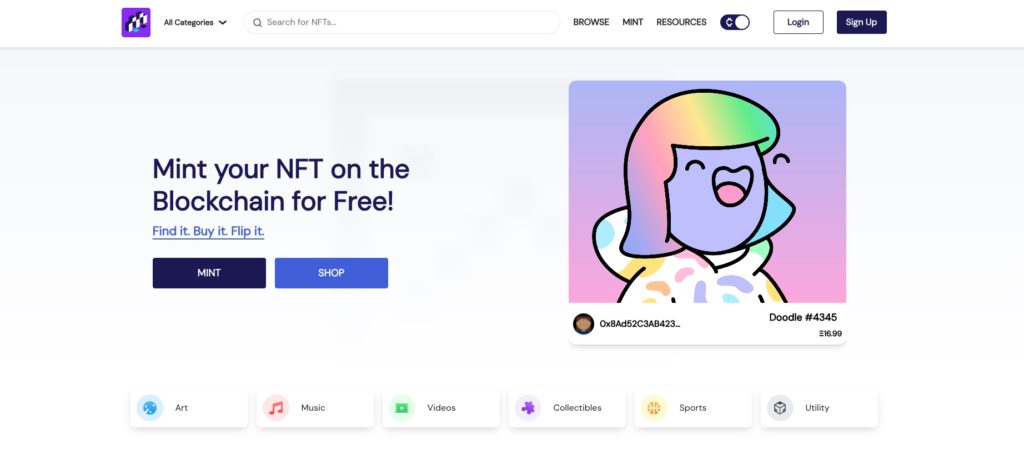
Initiatives to Simplify the NFT Experience:
- NFT Marketplaces: Platforms like OpenSea, Rarible, and Mintable aim to provide user-friendly interfaces that facilitate the creation and trading of NFTs. These marketplaces abstract much of the technical complexity, making it easier for brands and artists to tokenize their creations.
- Blockchain Education: Organizations and influencers within the blockchain space are actively working to educate the masses about NFTs. Educational campaigns, webinars, and tutorials help demystify NFT technology and empower individuals to participate confidently.
- Token Standards and Standard Bodies: Standardization efforts like ERC-721 and ERC-1155 have simplified the creation and interaction with NFTs by providing common standards that developers can adhere to. Additionally, organizations like the Blockchain Art Collective focus on educating artists and creators about NFTs.
Challenge 2: Environmental Concerns
As the allure of NFTs continues to captivate industries and individuals, an unavoidable shadow has emerged: environmental concerns stemming from the energy-intensive nature of blockchain networks that underpin NFT transactions. The undeniable carbon footprint of NFTs has raised questions about the sustainability of this innovative technology.
The Carbon Footprint of NFTs:
NFT transactions, particularly those on Proof of Work (PoW) blockchains like Ethereum, require significant computational power. This power consumption translates into a substantial carbon footprint. The energy required for minting and trading NFTs has prompted conversations about the environmental trade-offs associated with their creation.
Growing Awareness and Eco-Friendly Solutions:
Environmental awareness is on the rise, prompting individuals and industries to take stock of their carbon impact. This awareness extends to the world of NFTs, with creators, brands, and consumers seeking solutions that align with sustainability goals. The blockchain community has responded with initiatives aimed at reducing the ecological impact of NFTs.
Exploring Eco-Friendly Blockchain Networks:
One promising avenue for mitigating NFT-related environmental concerns is transitioning from energy-intensive PoW blockchains to more sustainable alternatives like Proof of Stake (PoS) or Layer 2 solutions. These networks drastically reduce energy consumption by design, offering a more environmentally friendly foundation for NFT creation and trading.
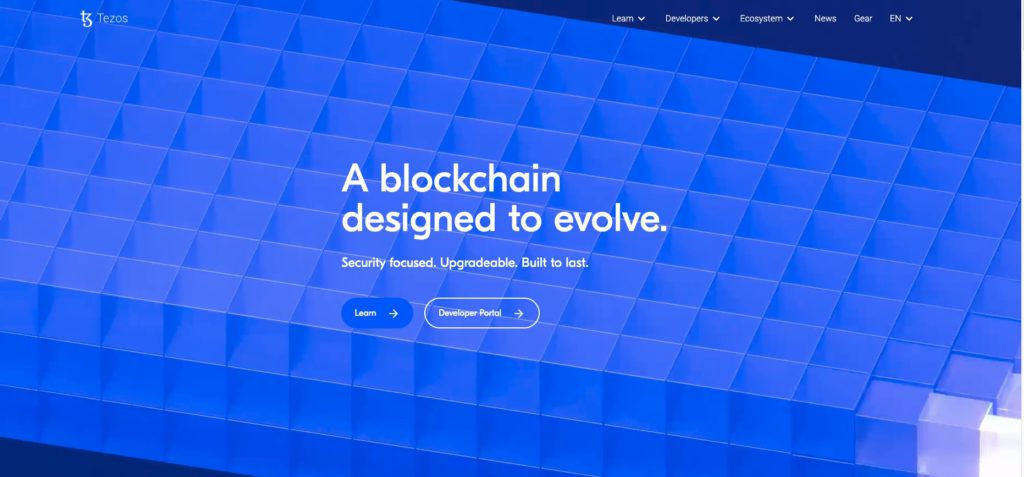
Brands Championing Sustainable NFTs:
- Tezos: Tezos is a PoS blockchain known for its energy-efficient consensus mechanism. It has gained attention as a more sustainable alternative for NFT minting and trading.
- Flow: Flow is a blockchain built for high-performance applications and NFTs. Its unique architecture aims to achieve both scalability and energy efficiency, making it an appealing option for brands that prioritize sustainability.
- Polygon (formerly Matic): Polygon is a Layer 2 scaling solution that operates on the Ethereum network. By moving transactions off the main chain, it significantly reduces energy consumption and associated environmental impacts.
- Sustainable NFT Projects: Initiatives like the ‘Proof of Impact’ project explore ways to offset the carbon emissions of NFT transactions by supporting environmental projects, bridging the gap between NFTs and sustainability.
Challenge 3: Market Saturation and Hype
As NFTs burst into the mainstream, an influx of creators and brands has flooded the market with a myriad of digital assets. The sheer volume of NFT releases raises concerns about dilution of impact, leaving both creators and consumers overwhelmed by the sheer volume of options available.
In a market brimming with NFTs, the key to standing out lies in offering unique value. Brands must move beyond mere tokenization and consider how their NFT campaigns bring something novel and exclusive to the table. The scarcity inherent in NFTs should extend beyond the token itself to the experience and story it encapsulates.
Strategies for Authenticity and Differentiation:
- Purpose-Driven NFTs: Brands that align their NFT campaigns with a purpose or cause can differentiate themselves by appealing to consumers’ values. Creating NFTs that contribute to charitable causes or environmental initiatives adds depth and meaning to the digital offering.
- Collaborations and Crossovers: Collaborations between brands, artists, and influencers can inject novelty into NFT campaigns. Cross-industry partnerships create unique value propositions that stand out in a sea of NFTs.
- Storytelling and Experiences: NFTs can become vessels for immersive storytelling and experiences. Brands that craft narratives around their NFTs, giving collectors access to exclusive content or real-world interactions, elevate the perceived value of their offerings.
- Community Engagement: Involving the community in NFT campaigns fosters a sense of ownership and loyalty. Brands that actively listen to their audience’s preferences and incorporate their feedback create a more engaged and invested customer base.
- Long-Term Vision: Instead of chasing short-term trends, brands should envision the long-term potential of NFTs in their marketing strategy. Consider how NFTs can complement the brand’s identity and contribute to its overall narrative.
Conclusion
Few technologies have elicited as much excitement, curiosity, and debate as Non-Fungible Tokens (NFTs). What began as a niche concept in the art world has rapidly reshaped the very foundations of how brands and consumers interact. From limited edition campaigns that leverage the psychology of scarcity to the creation of virtual goods that bridge the physical and digital realms, NFTs have carved a niche as both a creative tool and an engagement catalyst.
However, as with any frontier of innovation, the path is not without its challenges. The complexity of NFT technology poses accessibility barriers, necessitating user-friendly platforms and comprehensive education. Environmental concerns stemming from energy-intensive blockchain networks beckon the call for sustainable solutions. And in a landscape teeming with creativity, the challenge of market saturation underscores the importance of delivering unique value to stand out from the crowd.
Amidst these challenges, a profound transformation is unfolding—one that extends beyond transactional exchanges to forging genuine connections, bridging worlds, and enriching brand-consumer relationships. NFTs are more than digital tokens; they encapsulate stories, experiences, and aspirations. They grant brands the opportunity to create immersive narratives and consumers the opportunity to participate as co-creators, collectors, and champions.
As we navigate this uncharted territory, it becomes evident that NFTs are not just a trend; they represent a paradigm shift in how value, ownership, and engagement are perceived. They invite us to ponder the intersection of technology, creativity, and sustainability, challenging us to harness their potential, responsibly and thoughtfully.
The question that lingers now is not whether NFTs will shape the future of marketing, but rather how we, as brands, creators, and consumers, will shape the future of NFTs.





